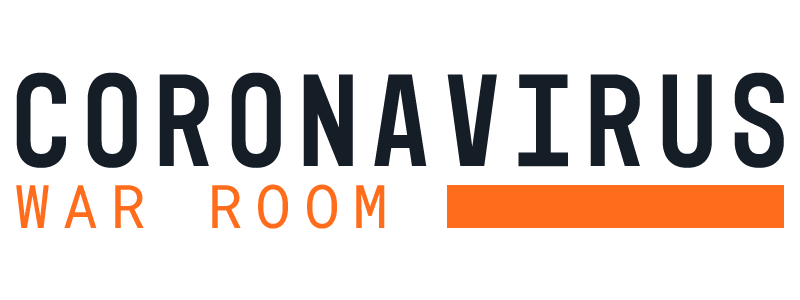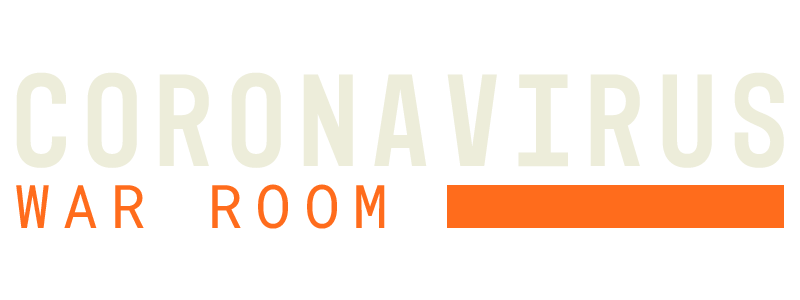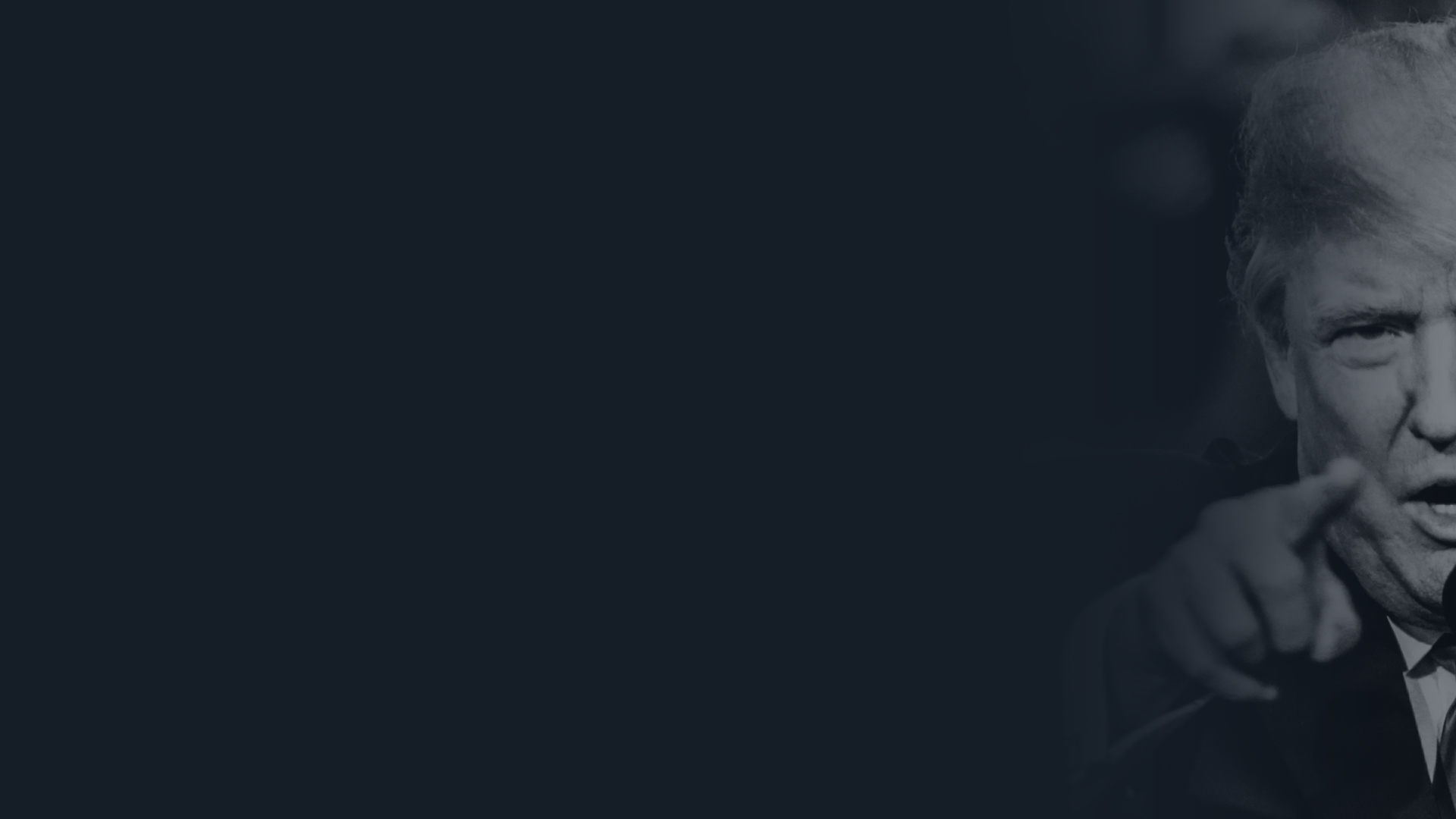Trump often claims that his actions helped stop the spread of coronavirus in the United States and saved lives, but that’s not true. A new report from epidemiologists Britta Jewell And Nicholas Jewell shows that if Trump had acted on social distancing guidelines two weeks earlier — as experts had recommended — the death toll would have fallen by 90%.
And now, as public health officials say that mass testing is the only way to safely re-open the country and contain the spread of the virus, the US is still lagging behind. That’s because President Trump and his administration continue to downplay the need of nationwide testing and refuse to address the testing shortages taking a toll on communities across the country.
Once again, people are losing their lives because Trump refuses to learn from his past mistakes and listen to the experts.
Experts Warned Trump That Social Distancing Would Save Lives
Dr. Anthony Fauci Acknowledged That There Was “A Lot Of Pushback About Shutting Things Down” In February.
-
Director Of The National Institute Of Allergy And Infectious Diseases Dr. Anthony Fauci Noted That Lives Could Have Been Saved Had The U.S. Implemented Social Distancing In February But “There Was A Lot Of Pushback About Shutting Things Down Back Then.” “Fauci himself suggested more could have been done by the administration Sunday on CNN’s State of the Union, when host Jake Tapper asked him what might have happened if the federal government promoted social distancing in February rather than in March, when the White House rolled out its ‘15 Days to Slow the Spread’ guidelines. ‘It’s — it’s very difficult to go back and say that. I mean, obviously, you could logically say, that if you had a process that was ongoing, and you started mitigation earlier, you could have saved lives,’ Fauci said, adding, ‘But there was a lot of pushback about shutting things down back then.’” [Vox, 4/13/20]
Now A New Model Shows That If Trump Had Listened on Social Distancing That Tens Of Thousands Of People Wouldn’t Be Dying
New Model: Had Trump Put Social Distancing Policies Into Effect Two Weeks Earlier, An Estimated 90 Percent Of Cumulative COVID-19 Deaths Could Have Been Prevented.
-
Epidemiologists Britta Jewell And Nicholas Jewell Estimate Estimate That 90 Percent Of Cumulative Deaths In The U.S. During The First Wave Of COVID-19 Could Have Been Prevented By Implementing Social Distancing On March 2.“But an estimated 90 percent of the cumulative deaths in the United States from Covid-19, at least from the first wave of the epidemic, might have been prevented by putting social distancing policies into effect two weeks earlier, on March 2, when there were only 11 deaths in the entire country.” [New York Times, Britta Jewell & Nicholas Jewell, 4/14/20]
-
Had Social Distancing Policies Been Implemented On March 9, Epidemiologists Britta Jewell And Nicholas Jewell Estimate That 60 Percent Fewer People Would Have Died Because Of COVID-19 In The U.S. “The effect would have been substantial had the policies been imposed even one week earlier, on March 9, resulting in approximately a 60 percent reduction in deaths.” [New York Times, Britta Jewell & Nicholas Jewell, 4/14/20]
The Key Takeaway From Trump’s Failure On Social Distancing: “The Cost Of Waiting Will Be Enormous.”
-
Epidemiologists Britta Jewell And Nicholas Jewell Emphasize That The Major Takeaway About The Impact Of Social Distancing Delays Is That “The Cost Of Waiting Will Be Enormous.” “Whatever the final death toll is in the United States, the cost of waiting will be enormous, a tragic consequence of the exponential spread of the virus early in the epidemic. The point here is not to cast blame on mayors or governors for the timing of what were difficult decisions for both public health and the economy, but rather, to alert cities and states where full social distancing measures are not in place that hesitation can come at a very high cost.” [New York Times, Britta Jewell & Nicholas Jewell, 4/14/20]
Now Experts Are Warning Trump That More Testing Is Necessary To Prevent More Deaths
Experts Say The U.S. Needs To Be Testing More People In Order To Make Sure New Cases Are Occuring At A Manageable Rate
-
Columbia University National Center For Disaster Preparedness Director Irwin Redlener Has Said The United States Should Be Between 750,000 And 1 Million People A Day. “Irwin Redlener, director of the National Center for Disaster Preparedness at Columbia University, told me the United States should be testing between 750,000 and 1 million people a day. ‘We’re not even close to that,’ Redlener said. ‘Without having a lot more capacity to do rapid testing, it’s not easy to see how we’re going to start going back to work.”’ [Washington Post, 4/15/20]
-
Amesh Adalja, Senior Scholar, Johns Hopkins Center For Health Security: “[New Cases] Are Going To Occur. We Just Want Them To Occur At A Rate That Is Manageable. And The Only Way That’s Going To Happen Is With Testing.” “It’s not a question of whether there’s going to be more cases after you lift social distancing. They are going to occur. We just want them to occur at a rate that is manageable. And the only way that’s going to happen is with testing.” [Vox, 4/10/20]
-
University Of California San Francisco Epidemiologist Jeffrey Martin: “If There’s Enough Testing Around And People Are Willing To Be Tested, The Brushfires Can Be Identified And Put Out Before The Wildfire.” “If there’s enough testing around and people are willing to be tested, the brushfires can be identified and put out before the wildfire… The only way that a society can function is if the brushfires are identified and put out.” [Vox, 4/13/20]
But Testing In The U.S. Is Plummeting Due To Narrow CDC Guidelines and Shortages
Testing In The United States Has Plummeted As Labs Say They Have Capacity To Test More Samples
-
The Number Of Coronavirus Tests Commercial Labs Analyze Each Day Has Plummeted By More Than 30 Percent Over The Past Week. “The number of coronavirus tests analyzed each day by commercial labs in the U.S. plummeted by more than 30 percent over the past week, even though new infections are still surging in many states and officials are desperately trying to ramp up testing so the country can reopen.” [Politico, 4/14/20]
-
The American Clinical Laboratory Association’s Commercial Labs Went From Testing 108,000 Samples On April 5 To 75,000 On April 12. “Hahn’s comments came as the American Clinical Laboratory Association reported that the number of samples commercial labs handle each day fell from 108,000 on April 5 to 75,000 by April 12. The group’s members, including commercial giants Quest and LabCorp, analyze about two-thirds of all coronavirus tests in the U.S.” [Politico, 4/14/20]
-
Commercial Labs Say They Now Are Sitting With Unused Testing Capacity. “It’s not clear whether demand has peaked among the groups on the CDC’s priority list. But after being overwhelmed for weeks, commercial labs say they are now sitting with unused testing capacity waiting for samples to arrive.” [Politico, 4/14/20]
-
American Clinical Laboratory Association President Julie Khani: “ACLA Members Have Now Eliminated Testing Backlogs, And Have Considerable Capacity That Is Not Being Used.” “‘ACLA members have now eliminated testing backlogs, and have considerable capacity that is not being used,’ ACLA President Julie Khani told POLITICO. “We stand ready to perform more testing and are in close communication with public health partners about ways we can support additional needs.’” [Politico, 4/14/20]
-
Quest Diagnostics, One Of The Largest Commercial Labs In The U.S., Says It Can Now Run 45,000 Tests A Day And Has Unused Capacity. “Quest Diagnostics, one of two major U.S. commercial lab companies, told POLITICO it is increasing outreach to health providers to ‘ensure patients are receiving testing they need.’ The lab company, which had a backlog of 160,000 tests as recently as late March, says it now can run 45,000 tests per day and has unused capacity.” [Politico, 4/14/20]
Even As Labs Say They Can Test More Samples, The Trump Administration Remains Hostile To Actually Addressing The CDC’s Narrow Testing Criteria And Shortages Of Basic Supplies Needed To Conduct Tests.
-
Testing In The U.S. May Have Dropped Off Because The CDC Has Maintained Narrow Criteria About Who Can Get Tested And Because Swab Shortages Persist. “One reason for the drop-off may be the narrow testing criteria that the Centers for Disease Control and Prevention last revised in March. The agency’s guidelines prioritize hospitalized patients, health care workers and those thought to be especially vulnerable to the disease, such as the elderly. Health providers have been turning away others in part due to shortages of the swabs used to collect samples.” [Politico, 4/14/20]
-
One Lab Official Explained That His Lab Was Operating At 40 Percent Capacity, Noting That The Lack Of Swabs And Other Material Was “An Important Bottleneck.” The shortages go further than that. New York City has announced that it is running low on test swabs, the long Q-Tip-like devices used to take samples from patients. The Seattle Times reported on similar shortages in that area. “We can do more testing than what we are doing,” an official at one lab told the paper. His lab was operating at less than 40 percent capacity. The lack of swabs and other material was “an important bottleneck.” [Washington Post, Philip Bump, 4/13/20]
-
Professor Of Global Health At Harvard T.H. Chan School Of Public Health Ashish Jha: “It’s Not Beyond The Capacity Of Our Nation To Produce Millions Of Swabs A Day.” “Surely, given that we have the entire country shut down, I am confident we can produce the swabs… It’s not beyond the capacity of our nation to produce millions of swabs a day.” [Axios, 4/13/20]
-
As Of April 14, 2020, The CDC Had Not Responded To Questions About Whether It Was Considering Changes To Its Narrow Testing Criteria. “The CDC has not yet responded to questions about whether it is considering changes to its testing criteria.” [Politico, 4/14/20]
-
Top Trump Officials, Including Vice President Mike Pence, Continue Attempting To Shift The Blame For Low Testing Onto Labs, Instead Of Acknowledging The Narrow Testing Criteria Or Supply Shortages That May Be Hindering U.S. Testing. “Top Trump administration officials have been bullish on the country’s capacity to expand testing. Vice President Mike Pence told reporters Monday that the government believes that if labs are able to utilize the machines they already have in house ‘we could double the amount of testing in the United States literally overnight.”’ [Politico, 4/14/20]


